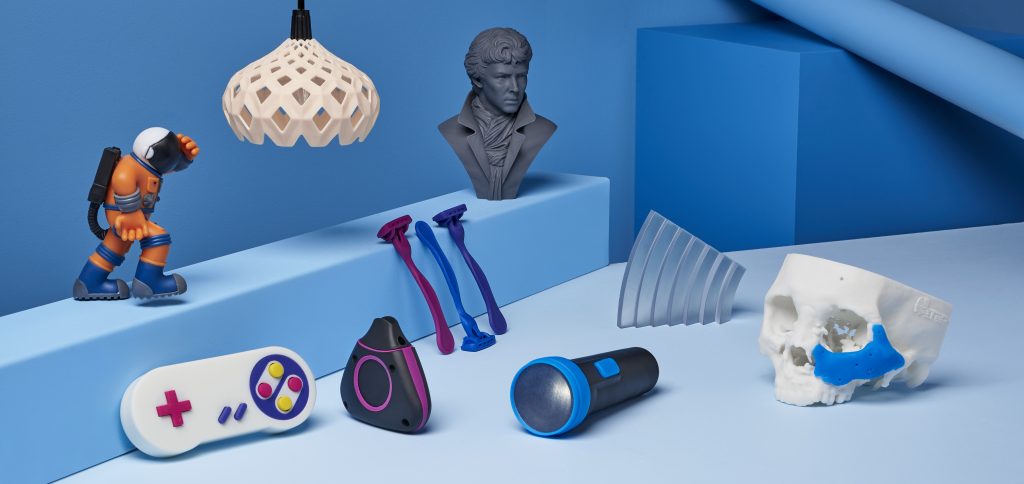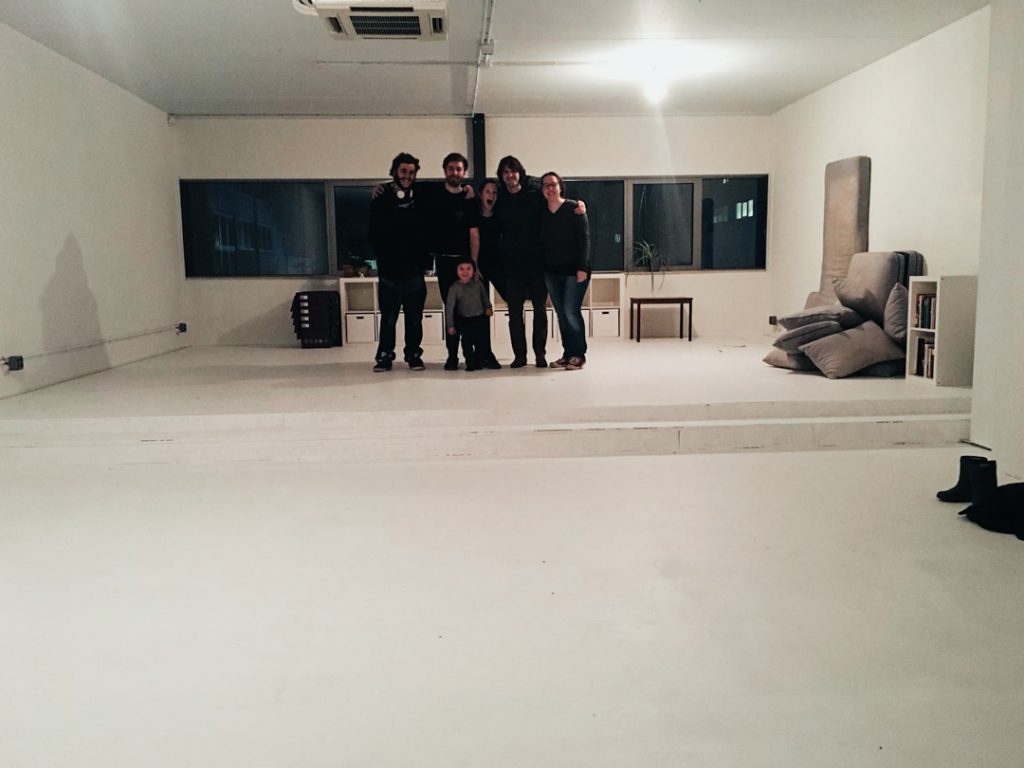This edition of 3D printing news Sliced features stories from Formlabs, Ultimaker, Paragon Rapid Technologies, Royal DSM, AmorePacific, Robo 3D, Arcam, Materialise, IOP, Victrex, Reflow, OmniDynamics AMUG, JustPrint3D, the Suzhou Chuzhibao Internet of Things, the National University of Cordoba, BIOLIFE4D, Tonkin Liu, PearlGreen and Arup.
New products from Ultimaker, Formlabs and UnionTech
3D printing company Ultimaker has launched two new products, the Ultimaker Breakaway support material and a 0.25mm build core.
The Ultimaker Breakaway support material is for multi-extrusion 3D printing. It can be quickly removed and does not require further post-processing. It is optimized for use with Ultimaker ABS, PLA, Nylon, CPE, and CPE+ materials.
The 0.25 mm 3D print core is a build core optimised to 3D print highly detailed and thin-walled objects.
Rapid prototyping service bureau Paragon Rapid Technologies has added Taurus, an SLA resin optimized for the automotive and aerospace industries to its materials inventory. Taurus was developed by materials company Royal DSM and is marketed under its Somos range.
SLA 3D printing company UnionTech has released its “PolyDevs” software, a cost effective print preparation program and slicer for its PILOT series of SLA 3D printers.
3D printing company Formlabs has launched Color Kit, a product which allows designers to mix their own color resin and use it with the Form 2 SLA 3D printer. Each kit contains a Color Base cartridge, five bottles of Color Pigment in Cyan, Magenta, Yellow, Black, and White, measuring syringes, and a color Recipe Book.

Changes and growth at Robo 3D, Arcam, IOP and Victrex
Robo 3D, a 3D printer manufacturer based in San Diego, California, has received firm commitments to raise $3.15 million with two “large institutional investors.” Robo 3D will use the funds to pursue sales growth, education opportunities and software development.
Arcam AB has announced that it is evaluating strategic alternatives for its company “DiSanto Technology Inc.” (DTI), which manufactures 3D printed orthopedic implants in the US. In a move to strengthen DTI’s focus and capabilities in both additive and traditional manufacturing.
Arcam’s board of directors is considering restructuring, full or partial separation of DTI via a spin-off, sale, collaboration, or some other form of transaction. It was also announced this week that announced that Arcam CEO, Magnus René and CFO Johan Brandt will both leave the company. Industry asked René a few questions about the news.
The Internet of Printing (IOP), a new 3D printing hardware, software and training supplier has been founded by former Clover Imaging Group Directors Mark Dawson and Oded Yakobowitz.
Thermoplastics company Victrex is to create 60 jobs at its new research site in Thornton, Lancashire, which will further develop the firm’s PAEK (polyaryletherketone) materials. Victrex is currently leading an Innovate UK-backed consortium to focus on 3D printing.
Recognising world changing 3D printing at Reflow, OmniDynamics and Materialise
OmniDynamics is a Bristol-based 3D materials company that created the “Strooder,” a 3D printing filament maker that turns pellets made of everyday waste plastics into material for FFF. The company has been named as one of the greenest companies in the west of England at the “West of England Green 50” awards.
The Additive Manufacturing Users Group (AMUG) announced Fried Vancraen, founder and CEO of Materialise, as the winner of its Innovators Award. According to Paul Bates, AMUG president, this was “because of the breadth of impact from Materialise’s software and services as well as the long-lived passion he has for making the world a better place through the application of additive manufacturing.”
Reflow, a producer of 3D printing filament from recycled waste plastics, has moved to a new dedicated office in Amsterdam. The company was previously based at the “A-lab” co-working hub in the city. Earlier this week Industry visited the Bottletop store in London, where Reflow filament was used to create a large scale retail unit.

3D printing drugs in Argentina, and BIOLIFE4D’s quest to 3D print organs
The Faculty of Chemical sciences at the National University of Cordoba (UNC) has installed a 3D printer in an effort to reduce the long-term storage of medicines in hospitals and medical facilities.
The CEO of 3D bio-printing company BIOLIFE4D has commented on recommendations by the US ACA/AHA task force that high blood pressure should be treated at 130/80 rather than 140/90. CEO Steven Morris said that the new guidelines were “alarming, as it means nearly 150 million adults now suffer from high blood pressure, and likely weren’t aware before that they were in any sort of danger.”
Noting that many US adults were unable to obtain organ transplants, he added that “At BIOLIFE4D we are specifically addressing these challenges by developing a process to 3D bio-print a heart utilizing the patient’s own cells. A patient-specific bio-printed heart viable for transplantation would not require immunosuppressant therapy because it is created utilizing the patient’s own genetic make-up.”
Skin friendly face masks, a Solar Gate, a tangible city and 3D printed toilets
AmorePacific, a South Korean beauty and cosmetics company has announced the development of its “Tailored Mask.” This is a 3D printed sheet mask that is customised according to an individual’s facial features. Combined with a “Tailored Serum,” the product can address a variety of skin conditions. AmorePacific developed the 3D printer for these masks with South Korean 3D printer manufacturer Lincsolution.
Engineering company Arup has developed a 10m tall perforated sundial structure called the “Solar Gate” for Kingston-upon-Hull, the UK City of Culture 2017. Designed by architect Tonkin Liu and manufactured locally by PealGreen, the Solar Gate features a 4mm thick “shell lace structure” that was additively manufactured, and mimics the design of natural seashells.

3D printer manufacturer JustPrint3D, which is a technical sponsor of the Modena Unesco World Heritage Site in Italy has manufactured small scale reproductions of its buildings, specifically designed for tactile interaction with blind, visually impaired and dyslexic people. Models of Modena’s Duomo and Ghirlandina were 3D printed using SLA.
Finally, a 200 square metre 3D printed public toilet block has been unveiled by the Chinese city of Suzhou. 3D printed from recycled construction waste, the toilet block houses a QR code-activated toilet roll dispenser developed by the “Suzhou Chuzhibao Internet of Things.”
Nominations for the second annual Industry Awards are now open. Make your selections now.
For regular updates on the 3D printing world, subscribe to our free Industry newsletter, follow us on Twitter, and like us on Facebook.
Featured image shows Hull’s new Solar Gate. Photo via Arup.

Leave A Comment